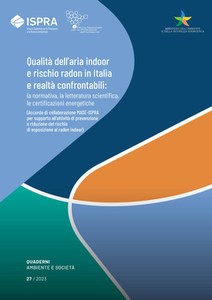Indoor air quality and radon risk in Italy and comparable realities: legislation, scientific literature, energy certifications
Radon, classified by the WHO and IARC as a Group 1 human carcinogen, is the second leading cause of lung cancer death after smoking. Under specific conditions, it tends to accumulate in indoor living environments, posing a significant health risk. Occupancy in inadequately designed and constructed buildings with unsuitable materials, and cases where management and maintenance are not performed correctly and consistently, can lead to adverse health effects not only for radon risk but also for elevated levels of chemical and microbiological agents
Therefore, when carrying out energy efficiency interventions, the consequences on indoor pollutant concentrations, including radon, should not be overlooked. This involves ensuring adequate air exchange (natural and/or forced) and, in specific cases, implementing ad hoc mitigation systems to reduce radon levels. The European Directive 2013/59/Euratom requires Member States to develop radon action plans. Pending the publication of the Italian Radon Action Plan, in October 2021, MASE and ISPRA finalized a Collaboration Agreement to support the activities for preventing and reducing indoor radon exposure risks. The main goals outlined in the Agreement are to enhance understanding of indoor radon risk and raise public awareness about the health risks associated with indoor radon exposure. As part of this Agreement, this publication has been created with the intention of providing an analysis of the regulations, technical and scientific documentation, and certification documentation related to energy efficiency and radon gas concerning the Italian context and other comparable situations. The analysis highlights the synergies and criticalities between indoor air quality, radon, and building energy efficiency, both in terms of methodology and the results obtained in the different publications.
Publication available only on-line
Dowbload the publication (pdf - 4 mb)

